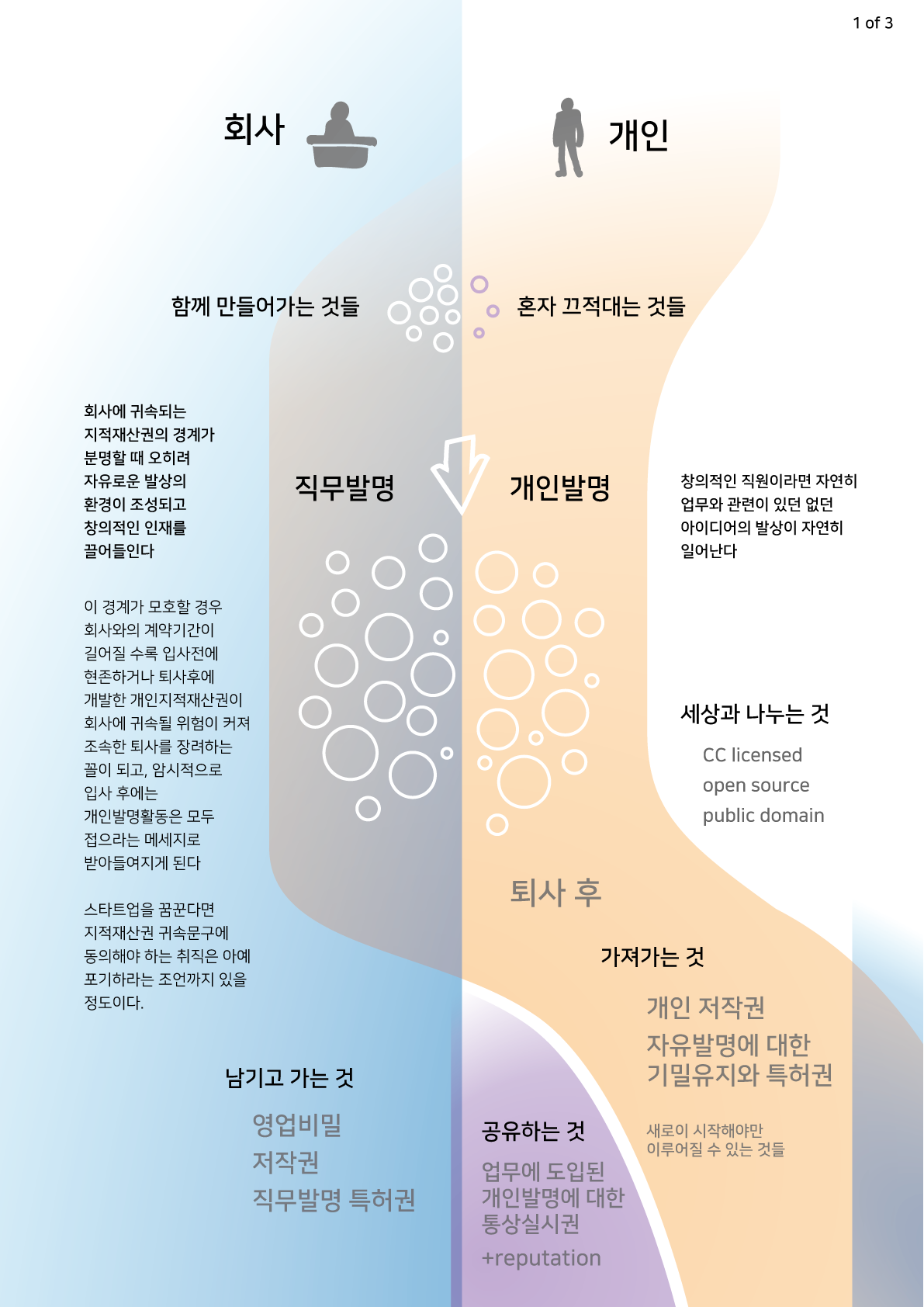I had a season where I was interviewing to join a mid-size technology company with some history. They had some misgivings about allowing their employees to engage in outside projects, so I suggested they clarify company policy along the lines of what Github proposed with their Balanced Employment IP Agreement (BEIPA), to encourage more enthusiastic invention, to attract high-quality, high-energy, collaborative talent among contributors to open source, generate good-will among the development community, and obtain indisputable rights to use inventions generated by the employee during employment.
I will post an English version soon.

First is distinctly calling out ideas, personal projects, and inventions that privately originated with the employee about to work as part of a company ( 🟧 orange), which has it’s own intellectual property to protect (🟦 blue).
During employment, a creative, resourceful worker will invent novel solutions for the company ( ⬜️ the intersection on the left), and continue to have shower thoughts that have no immediate application for the work at hand ( 🟧 orange on the right).
When the worker and company part ways, the employee leaves behind their rights to IP that belongs to the company, but takes personal IP, including the right to keep personal ideas private and to seek formal protection in the form of patents or copyright.
There remains also a shared ( 🟪 purple) area, where the license to continue to use and execute any personal inventions that were incorporated into the company’s work during employment remains with the company.

There is also work that is shared with the world ( 🏳️ on the right), open-source licenses may retain copyright and patents but gives for the company and for public projects. Korean labor laws and case precedent had not clearly defined what are inventions that are “work-related.” Moreover, employment agreements that assign “all inventions” to the company have the risk of being not recognized by the court.
The company and new employer enter into an agreement in good faith, but the employee has no control over who will be interpreting and enforcing this agreement going into the future, as management changes, and even mergers and acquisitions.

This is a translation (into Korean) the actual language that is used to clarify what IP belongs to the company, and what belongs to the worker, and clarifies what rights towards the personal IP that remains as a contribution to the company’s projects.
